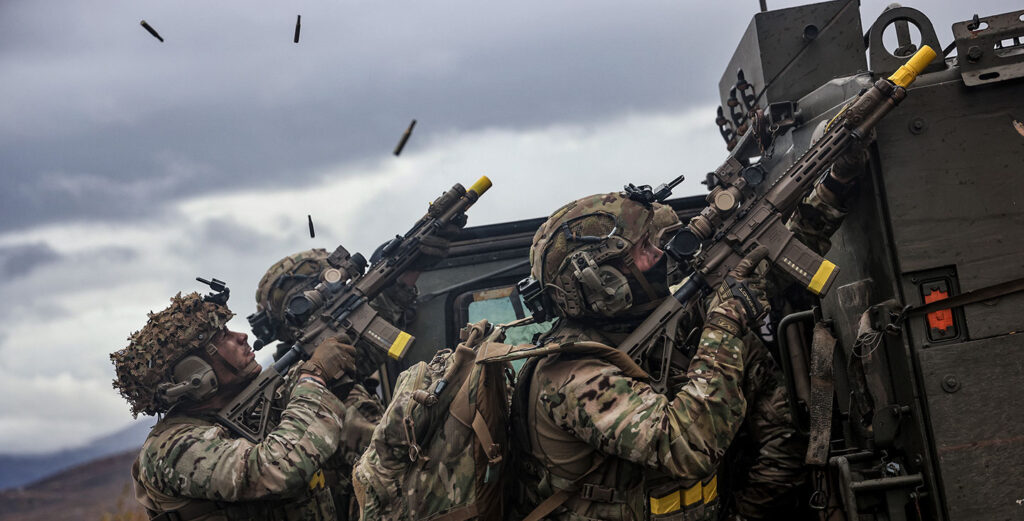In a complex exercise in the Arctic fjords of Northern Norway, commandos from the United Kingdom’s Royal Marines, along with their Norwegian counterparts, tested their amphibious landing skills, their ability to fight and protect themselves once they’ve reached shore, and their proficiency at moving combat supplies with traditional logistics and uncrewed technology. The allied forces practiced rapid, scalable amphibious options to strengthen deterrence on NATO’s northern flank.
Exercise Arctic Tide — part of the Joint Expeditionary Force’s (JEF) overarching Tarassis series of drills — deployed 350 U.K. Marines, Sailors and Soldiers to the High North with the Royal Fleet Auxiliary (RFA) support ship Lyme Bay from late September to October 10. JEF is a U.K.-led rapid reaction force that includes Nordic and Baltic countries, as well as the Netherlands.
After the RFA Lyme Bay arrived, raiding troops from the 40 Commando unit took a two-hour trip through the fjords before raiding a beach. There was a sharp focus afterward on keeping the troops supplied with ammunition, food and other supplies deep behind enemy lines. The mission: establish a foothold in the frigid conditions and pave the way for a larger-scale assault by allied troops.
“Joint Expeditionary Force partner nations have responded to rapidly developing threats by planning and exercising a wide variety of response options,” Amphibious Task Force Commander Aaron Revell said. “Exercise Arctic Tide … has rehearsed the U.K. Commando Force’s ability to conduct advance force and shaping operations in the High North and Arctic. I am especially proud of our 350 Sailors, Marines and Soldiers, enabled by advanced and uncrewed technology, to covertly project several small but highly effective teams at long range from the sea, and sustain them for extended operations through a full first and second line of logistics support by agile amphibious landing,” Revell said.
Arctic Tide let the Commando Logistic Regiment (CLR) test not only traditional logistics methods with the RFA Lyme Bay but also uncrewed technology to get needed supplies to teams that were spread out and operating deep in the wilderness — a wide mountainous area that is tough to navigate. “It is easy to regard logistics as the backdrop to warfighting, but history repeatedly proves it is decisive,” said Maj. Al Hewett, second in command of CLR.
“The High North presents some of the harshest conditions anywhere in NATO’s area of responsibility. Limited infrastructure, long lines of communication, and a climate that degrades equipment and tests endurance,” Hewett said. “For advanced force units tasked with reconnaissance, strike or enabling operations, the ability to remain supplied, repaired and connected is what makes the difference between a fleeting presence and a credible effect.”
The operation used 35 heavy vehicles — including Viking armored vehicles, trucks and tractors — and an array of equipment hauled ashore from the RFA Lyme Bay with versatile landing craft. “CLR has sought to relearn old lessons and integrate new practices,” Hewett said. “The exercise provided the regiment with the chance to plan, test, and adapt its approach to sustaining forces in dispersed field support areas, to regenerate skills not practiced in several years.”

